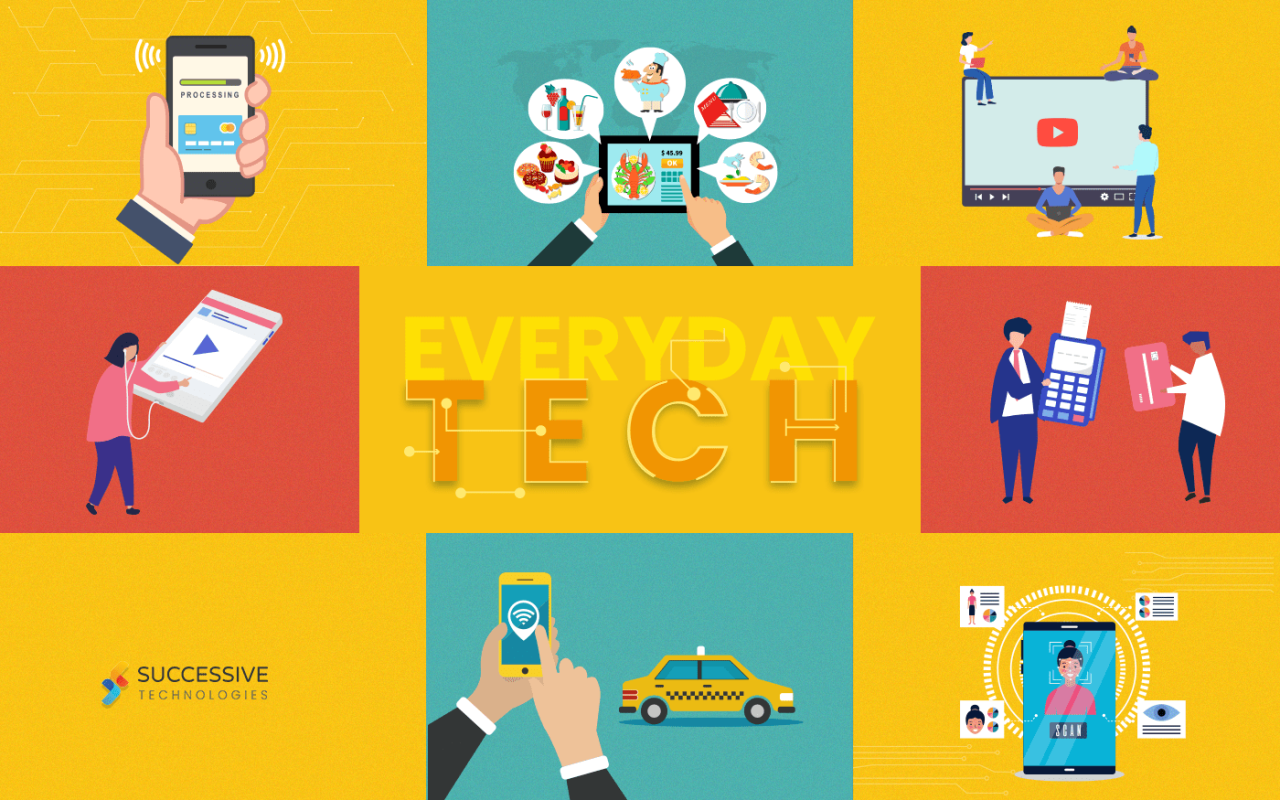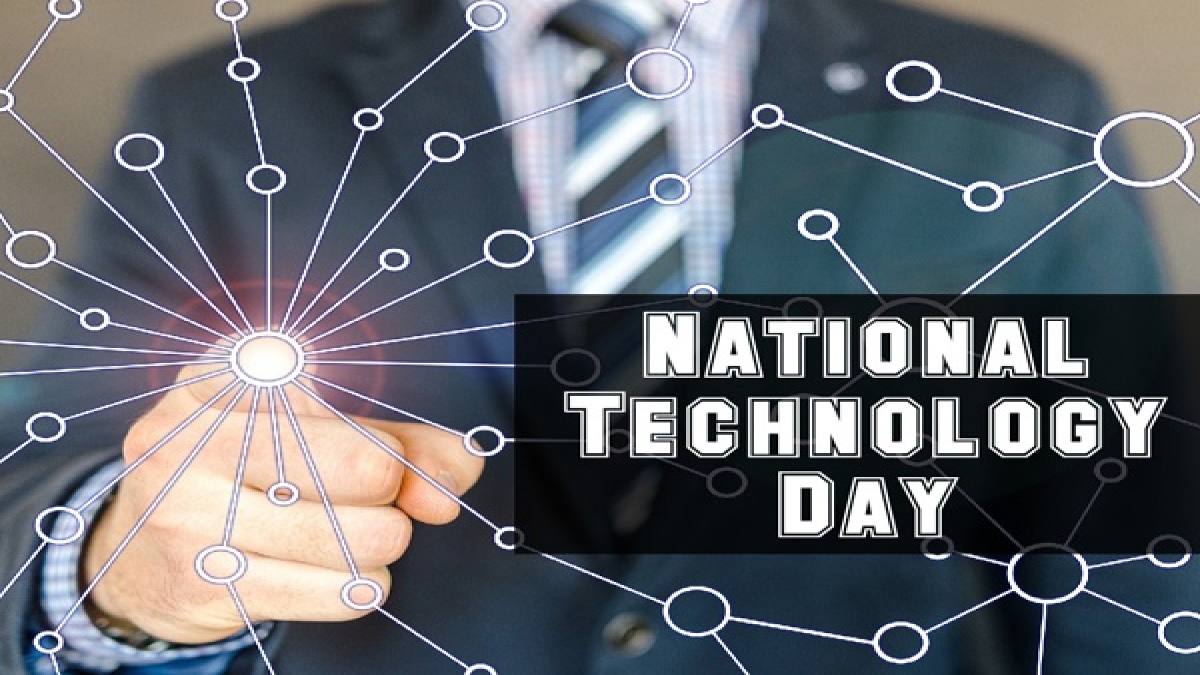Day Technologies: Shaping Our Perception of Time
Day technologies, from the ancient sundial to the modern smartphone, have fundamentally shaped our understanding and experience of time. These technologies have not only revolutionized how we measure time but […]

Day technologies, from the ancient sundial to the modern smartphone, have fundamentally shaped our understanding and experience of time. These technologies have not only revolutionized how we measure time but also profoundly influenced our daily routines, work habits, and even our social interactions.
This exploration delves into the evolution of day technologies, examining their impact on modern life, human behavior, and the emerging trends that are poised to further transform our relationship with time.
The Evolution of Day Technologies
The concept of timekeeping has been fundamental to human civilization since its inception. From the earliest attempts to track the passage of day and night, we have witnessed a remarkable evolution in the technologies used to measure and manage time. This journey has taken us from rudimentary tools like sundials to sophisticated digital clocks, shaping our understanding of time and its impact on our lives.
Traditional Timekeeping Devices
Traditional timekeeping devices relied on natural phenomena or mechanical principles to measure time. These devices played a crucial role in shaping our early understanding of time and its significance in daily life.
- Sundials: Sundials, among the oldest timekeeping devices, utilize the position of the sun in the sky to determine the time of day. They consist of a flat surface with markings and a gnomon, a vertical rod that casts a shadow. As the sun moves across the sky, the shadow cast by the gnomon falls on different markings, indicating the time. Sundials were widely used in ancient civilizations, including Egypt, Greece, and Rome.
- Hourglasses: Hourglasses are simple timekeeping devices that measure time by the flow of sand from an upper chamber to a lower chamber. They typically consist of two glass bulbs connected by a narrow neck. Sand is poured into the upper bulb, and as it flows through the neck, it takes a predetermined amount of time to fill the lower bulb. Hourglasses were commonly used in medieval Europe for tasks requiring precise time intervals, such as measuring the duration of prayers or the length of work shifts.
- Mechanical Clocks: Mechanical clocks, developed in the 14th century, revolutionized timekeeping by introducing the concept of a regulated, self-sustaining timekeeping mechanism. They typically consist of a weight or spring that provides power to a series of gears and escapements, which control the movement of hands on a clock face. Mechanical clocks offered greater accuracy and consistency compared to earlier timekeeping devices, allowing for more precise measurement of time.
Digital Timekeeping Devices
The advent of digital technology has brought about a profound shift in the way we perceive and interact with time. Digital timekeeping devices offer unparalleled accuracy, versatility, and accessibility, transforming our daily lives in numerous ways.
- Quartz Clocks: Quartz clocks, developed in the 1960s, utilize the piezoelectric property of quartz crystals to generate a precise electrical signal that drives a clock mechanism. These clocks offer significantly higher accuracy than mechanical clocks, with errors typically measured in fractions of a second per day. Quartz clocks have become ubiquitous in everyday life, powering everything from wristwatches to alarm clocks to computer clocks.
- Atomic Clocks: Atomic clocks, the most accurate timekeeping devices available, rely on the precise frequency of atomic transitions to measure time. They utilize atoms of specific elements, such as cesium, to generate a signal with incredibly high accuracy. Atomic clocks are used for scientific research, navigation, and communication, providing the foundation for global timekeeping standards.
- Smartwatches and Mobile Devices: Smartwatches and mobile devices have further integrated timekeeping into our lives, providing not only accurate time but also a range of features that enhance our understanding and management of time. These devices offer reminders, alarms, calendars, and time tracking applications, allowing us to organize our schedules, monitor our productivity, and stay connected with the world around us.
Day Technologies in Modern Life
Day technologies have become deeply intertwined with the fabric of modern society, profoundly shaping how we live, work, and interact with the world around us. These technologies are not merely conveniences; they are essential tools that underpin countless aspects of our daily lives, from transportation and communication to entertainment and healthcare.
The Diverse Range of Day Technologies
Day technologies encompass a wide array of innovations that have revolutionized various sectors. These technologies are constantly evolving, with new advancements emerging regularly. The following table provides an overview of some of the most significant day technologies and their impact on modern life.
| Technology Name | Function | Impact on Daily Life | Examples of Use |
|---|---|---|---|
| Smartphones | Mobile communication, internet access, navigation, entertainment, productivity tools, and more. | Transformative impact on communication, information access, and daily activities. | Making calls, sending messages, browsing the internet, using social media, taking photos and videos, navigating with GPS, playing games, managing finances, shopping online, and more. |
| Artificial Intelligence (AI) | Automate tasks, analyze data, make predictions, and personalize experiences. | Enhancing efficiency, improving decision-making, and providing personalized services. | Self-driving cars, personalized recommendations on streaming services, fraud detection in financial transactions, medical diagnosis, and more. |
| Internet of Things (IoT) | Connecting devices and objects to the internet, enabling data collection, remote control, and automation. | Smart homes, connected cars, wearable devices, and more. | Controlling home appliances remotely, monitoring health data, tracking vehicle performance, and optimizing energy consumption. |
| Cloud Computing | Storing and accessing data and applications remotely over the internet. | Increased accessibility, scalability, and cost-effectiveness. | Storing files and photos in the cloud, using online productivity suites, accessing software applications remotely, and more. |
| Virtual Reality (VR) and Augmented Reality (AR) | Creating immersive experiences by blending the real and virtual worlds. | Transforming entertainment, education, training, and healthcare. | Gaming, virtual tours, educational simulations, medical training, and more. |
| Biotechnology | Using biological systems and processes to develop new technologies and products. | Revolutionizing healthcare, agriculture, and environmental solutions. | Gene editing, personalized medicine, disease diagnostics, and more. |
The Impact of Day Technologies on Human Behavior
Day technologies, encompassing a wide range of devices and platforms, have profoundly impacted human behavior, shaping how we interact with the world, manage our time, and form relationships. This pervasive influence brings forth both benefits and drawbacks, necessitating a comprehensive understanding of its multifaceted effects.
Sleep Patterns
The ubiquitous presence of day technologies, particularly smartphones and tablets, has significantly altered sleep patterns. The blue light emitted from these devices can suppress melatonin production, a hormone crucial for regulating sleep-wake cycles. Furthermore, the constant stream of notifications and engaging content can lead to procrastination, delaying bedtime and reducing overall sleep duration. This disruption of natural sleep rhythms can have detrimental consequences for physical and mental well-being, impacting mood, cognitive function, and overall health.
Work Habits
Day technologies have revolutionized work habits, enabling remote work, increased productivity, and seamless communication. However, the constant connectivity and accessibility fostered by these technologies can blur the boundaries between work and personal life, leading to feelings of overwhelm and burnout. The pressure to remain constantly available and responsive can lead to a sense of being perpetually on call, eroding work-life balance and contributing to stress.
Social Interactions
Day technologies have significantly influenced social interactions, offering new avenues for connection and communication. Social media platforms and instant messaging applications facilitate instant communication and the formation of online communities, expanding social networks and bridging geographical distances. However, excessive reliance on these technologies can lead to social isolation and a decline in face-to-face interactions, impacting the development of empathy and social skills.
Emerging Trends in Day Technologies

The field of day technologies is constantly evolving, driven by advancements in computing power, artificial intelligence, and sensor technology. These advancements are leading to the development of innovative tools and systems that are transforming how we experience and manage time.
Wearable Devices
Wearable devices, such as smartwatches and fitness trackers, are becoming increasingly sophisticated and integrated into our daily lives. These devices can monitor our physical activity, sleep patterns, heart rate, and even our stress levels.
- Emerging Technology: Biometric Wearables
- Function: These devices use sensors to track physiological data, such as heart rate variability, skin temperature, and blood oxygen levels.
- Potential Benefits: Biometric wearables can provide valuable insights into our health and well-being, allowing us to identify potential health issues early on and make informed decisions about our lifestyle.
- Potential Drawbacks: Privacy concerns exist as these devices collect sensitive personal data. There is also a risk of over-reliance on technology for health management, potentially neglecting traditional medical advice.
Smart Homes
Smart homes are becoming increasingly popular, with devices that can automate tasks, control lighting, and adjust temperature based on our preferences and schedules.
- Emerging Technology: Smart Home Assistants
- Function: Voice-activated assistants like Amazon Alexa and Google Assistant can control various smart home devices, providing a hands-free experience.
- Potential Benefits: Smart home assistants can enhance convenience and efficiency by automating tasks, improving accessibility for individuals with disabilities, and optimizing energy consumption.
- Potential Drawbacks: Privacy concerns arise as these devices collect data on our daily routines and habits. The reliance on technology for basic tasks could lead to a decrease in practical skills and independence.
Artificial Intelligence
Artificial intelligence (AI) is playing an increasingly important role in day technologies, enabling personalized experiences and automating complex tasks.
- Emerging Technology: AI-Powered Time Management Tools
- Function: These tools use AI algorithms to analyze our schedules, priorities, and work patterns to optimize our time allocation and reduce distractions.
- Potential Benefits: AI-powered time management tools can improve productivity, reduce stress, and help us achieve our goals more effectively.
- Potential Drawbacks: The over-reliance on AI for time management could lead to a lack of flexibility and adaptability. There is also a concern about the potential for AI to make decisions that are not aligned with our values or priorities.
The Future of Day Technologies
The convergence of these emerging trends is shaping the future of day technologies. Wearable devices, smart homes, and AI are expected to become increasingly interconnected, creating a seamless and personalized experience for managing our time and enhancing our well-being.
The Future of Day Technologies

The rapid evolution of day technologies has brought us to a point where the lines between the physical and digital worlds are blurring. As we move forward, the future holds exciting possibilities for how day technologies will shape our lives, impacting everything from our daily routines to our understanding of time and productivity.
A Glimpse into the Future of Day Technologies
The next decade promises significant advancements in day technologies, leading to a more integrated and personalized experience. Here’s a glimpse into what the future might hold:
- Adaptive Time Management: Imagine a world where day technologies adapt to our individual needs and preferences, automatically adjusting schedules and reminders based on our energy levels, personal commitments, and even weather conditions. This personalized approach to time management could lead to greater efficiency and productivity.
- Augmented Reality and Virtual Reality Integration: Day technologies could seamlessly integrate with augmented reality (AR) and virtual reality (VR) technologies, creating immersive experiences that blur the lines between the real and digital worlds. Imagine using AR to visualize your daily schedule overlaid on your physical environment or using VR to experience remote work environments as if you were physically present.
- Biometric Monitoring and Optimization: Day technologies could leverage advancements in biometrics to monitor our physical and mental well-being in real-time. This data could be used to optimize our sleep patterns, nutrition, and exercise routines, leading to a healthier and more balanced lifestyle.
The Impact of Future Day Technologies on Human Behavior and Societal Norms
These advancements in day technologies will have a profound impact on human behavior and societal norms. Some key areas of influence include:
- Shifting Work Patterns: The integration of day technologies with remote work platforms could lead to a more flexible and geographically dispersed workforce. This could challenge traditional notions of the workplace and create new opportunities for remote collaboration and global connectivity.
- Evolving Social Interactions: As day technologies become more sophisticated, they could influence how we interact with each other. For example, AR and VR could create new forms of social interaction, blurring the lines between physical and virtual relationships.
- Redefining Productivity and Efficiency: Day technologies could redefine our understanding of productivity and efficiency by providing us with tools to optimize our time, focus, and energy levels. This could lead to a more balanced and fulfilling approach to work and life.
A Future Where Day Technologies Seamlessly Integrate into Our Lives
The future of day technologies is about creating a seamless and personalized experience that enhances our lives. Imagine a world where:
“Day technologies anticipate our needs, seamlessly blending into our routines, and empowering us to make the most of our time and energy.”
This vision of the future is not about replacing human connection or creativity, but rather about augmenting our capabilities and empowering us to live more fulfilling lives. Day technologies have the potential to transform how we experience time, work, and connect with each other, opening up a world of possibilities for a more efficient, productive, and enriching future.
Ending Remarks
As we move forward, the future of day technologies holds immense potential to further blur the lines between the physical and digital realms. By seamlessly integrating into our lives, these advancements promise to enhance our productivity, optimize our well-being, and ultimately redefine our perception of time itself. The journey of day technologies is a testament to human ingenuity and our enduring quest to master the elusive concept of time.
Day technologies are constantly evolving, from the way we communicate to how we manage our homes. One area where this is particularly evident is in climate control, with companies like Emerson leading the way. For example, the emerson climate technologies control board offers advanced features for optimizing comfort and energy efficiency.
These advancements in day technologies are transforming the way we live and work, making our lives easier and more sustainable.









